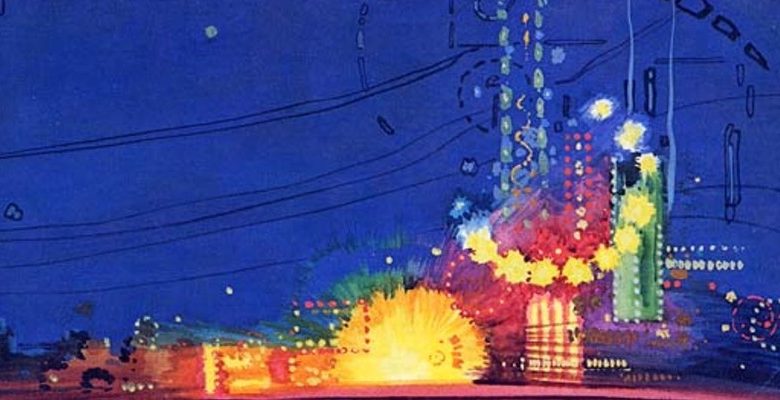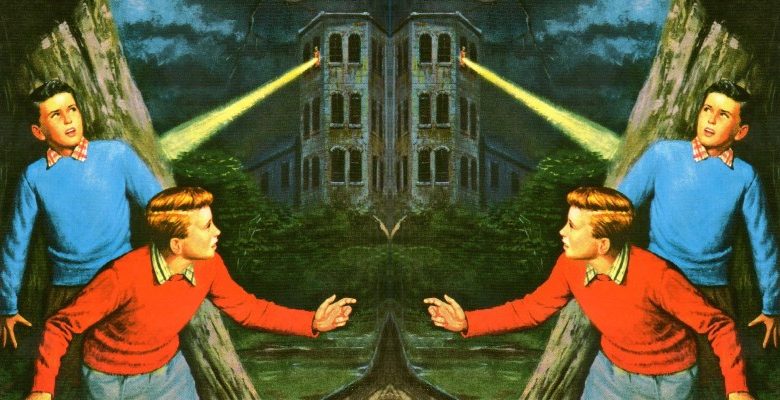[ad_1]
Growing-up in New York in the 1970s, parts of city had become heroin paradises. Whether the junkies were Vietnam vets who returned to the states with a monkey (addiction) on their back or homegrown hop heads who shot up in public school bathrooms, it was impossible to walk through town without seeing a runny nose, arm scratching, head nodding addict. As a boy dwelling between Hamilton Heights and Harlem, I saw my share of drug casualties hanging out in the middle of the block, standing over trashcan bonfires, lurking in doorways, slouching on Riverside Drive benches or roaming wild eyed in the pursuit of cash, smack and a place to get high. It wasn’t always easy to avoid them and their decadent ways, and that predicament became even harder when the “dope fiend,” as we called them, was a friend or a relative.
My buddy Gordon Rovins, who is a few years older than me and hails from Washington Heights, has “strong memories” of the dark days when heroin hit his streets. “I was 12-years old in 1967 when I saw my first junkie,” he says. “Back then the neighborhood was primarily Jewish, Irish and Black, and there were a lot of street gangs. Those guys were always fighting against one another, but after heroin, those same guys were nodding out together.” It was those same streets that writer Jim Carroll later immortalized in his autobiographical poetry classic The Basketball Diaries.
“There were so many remarkable athletes uptown who became junkies,” Rovins says. “Later, when I was a student at George Washington High, I knew a number of people who died from smack, one as young as 13. We all knew what happened with former G.W. student (turned pop star) Frankie Lymon (who died from a heroin overdose in 1968), but there were so many others. My friend’s brother ODed; we had to drag him to the tub and give him a cold bath. Luckily, he lived. There was a smart Black kid who lived on my floor who was a piano prodigy and sports star, but, once introduced to heroin, it was over.”
The same predicament befalls protagonist George Cain in the wild autobiographical junkie novel Blueschild Baby. Written by a scribe also named George Cain, the debut novel was published in 1970 when he was 27-years-old. The non-liner text is a sometimes spooky and often nightmarish tale that documents the heroin hijinks of Cain, a native New Yorker, as he traces his life from lower-middle class respectability to prep school basketball star to hardcore junkie who, out on parole, steals from friends without a problem.
During that era, it was more than likely that you’d know a heroin junkie or have one as a relative. In my family that person was a tall, lanky guy named Jimmy Mitchell, who was my grandmother’s first cousin. A dark-skinned, handsome dude, he’d been shooting up since the mid-1950s. “I don’t know if he was ever a great musician or sportsman,” says mom (Frances Dorothea Gonzales), who most in family called Doris. “Jimmy was a junkie from the day I met him.”
Jimmy first stole from her in early 1963, a few months before I was born. “I was pregnant and living in the Lenox Terrance,” mom says. “Jimmy robbed my place while I was in the bathroom.” Though it happened damn nearly sixty years back, she remembers it clearly. After welcoming him into her 12th-floor apartment, they chatted for awhile before mom excused herself to go to the bathroom. While doing her business, Jimmy bagged an iron, a radio and a half-filled piggy bank that she’d been “saving for the baby.” Mom never trusted Jimmy again, though that wouldn’t be the last time he’d betray our family with his junkie ways.
Ten years later mom was sharing an apartment with Grandma Mary, my little brother Carlos and ten-year-old me. Living thirty blocks away from the Lenox Terrance, it was grandma who started letting Jimmy come over to visit and allowed him to take me and Carlos to the Roosevelt Theater on 145th Street to see some Spaghetti Western double-feature. When the movie was over, I remember the walk home that included a stop in front of a ratty tenement building on 148th between Broadway and Amsterdam.
After whispering a few words to some dude on the stairs, Jimmy turned to me and baby bro. “Ya’ll wait right here, I’ll be down in a few.” Stepping into the darkness, Jimmy was gone for fifteen minutes. Though I didn’t witness it firsthand, I realized years later he was scoring drugs, probably in a similar shooting gallery where fictional George Cain winds up in the beginning of Blueschild. The spot was operated by Cain’s friend Sun, who lives there with his sickly girlfriend Flower and a few other addicts. The apartment is a decayed landscape, but has the appeal of paradise to some.
Two weeks after Jimmy took me to the movies, Grandma invited him and his mother, Aunt Lillian, over for Sunday dinner. Mom recalls that when she mentioned closing the window in the living room, Jimmy jumped-up and volunteered. “Of course, he didn’t lock it,” she sighs. The next day, after Grandma picked up me and Carlos from the babysitter, we returned home to a burglarized apartment. I was the first to notice. “Grandma, the TV set is gone,” I yelled when I saw that the Zenith wasn’t in its usual spot. “Boy, stop playing,” she replied. However, after stepping into the living room, she realized I wasn’t joking.
Dashing from room to room, we did a quick survey. Amongst the missing items was a red Panasonic tape recorder that I’d won selling chocolate bars for St. Catherine’s, mom’s 8-tracks, the black & white television from our bedroom and packs of pantyhose that were in granny’s drawer. Later, after the police left, our neighbor Mr. Peele told Grandma, “I saw your cousin and another guy carrying stuff out of your apartment earlier.” Mr. Peele claimed that he told two beat cops, who told him to mind his business. That night mom was pissed. “After we invited him into our house and fed him, he stole from us to buy dope.”
Though I was only ten, the word “dope” was already in my vocabulary. Mom had no problem dragging us to movies when she couldn’t get a babysitter, so, two years before I’d seen Panic in Needle Park, a flick told from the perspective of a junkie couple. Originally written as a magazine article in 1965 (“The World of Needle Park”) for Life, writer James Mills turned his research into a novel the following year. The areas real name is Sherman Park and it’s located on 72nd Street and Broadway, across from the subway station.
Mills’ book was adapted by Joan Didion and John Gregory Dunne and directed by Jerry Schatzberg. The film starred Al Pacino (Bobby) and Kitty Winn (Helen) as the strung-out couple and is filled with gritty drugged-out scenes that included them scoring, stealing and being so fucked-up neither notices when their dog runs off the Staten Island Ferry. Panic in Needle Park was released in 1971, the same year a belligerent dope fiend murdered “soul superhero” saxophonist King Curtis fourteen blocks away.
Though a junkie’s life can be difficult and scary, it’s equally as frightening for friends and family who are forced to deal with the repercussions of their habit. One school holiday morning a few weeks after Jimmy robbed our place, mom was walking me and Carlos to our babysitter Miss Wilson’s apartment on Amsterdam Avenue when I spotted Jimmy and his friend a half block away. Mom saw him too. “I’m scared,” I said, and she held tightly to my hand.
Jimmy looked up and flashed smile. “Doris,” he called, but she ignored him. “Doris.” A few steps before we got to the doorway, mom turned around and with all of her Sagittarius fire sign energy screamed, “If you say anything more to me, my mother or my children, I’ll have you arrested!” Jimmy grinned devilishly and backed away. It was a memorable morning, because I’d rarely seen mom so angry. As for junkie cousin Jimmy, I didn’t see him again for over a decade.
Though Jimmy seemingly vanished from the scene, there were plenty other smack scenarios I witnessed throughout the 1970s, a harrowing era that made me never want to put a needle in my arm. Still, while I’ve never had the urge to do heroin, I’ve long been addicted to junky lit and films that include Man Child in the Promised Land by Claude Brown, the pulp-lit of Donald Goines, The French Connection, the writings of William Burroughs, the plays and poetry of Miguel Piñero, the Shirley Clarke features The Connection and The Cool World, both featuring addict actor Carl Lee, who later played the coke dealer partner of Youngblood Priest (Ron O’Neal) named Eddie in the Blaxploitation flick Superfly.
While that film focused primarily on drug dealers, it opens with two raggedy junkies walking west on a 125th Street trying to decide who to mug. The pair could’ve been Cousin Jimmy and his homeboy, or writer George Cain hanging with one of his Harlem homies in Blueschild Baby, a book I first bought in hardcover at a second-hand book shop when I was a messenger in the 1980s. Drawn to graphic cover featuring an illustration of a Black man with an American flag tourniquet around his arm, readying and tightening his veins to inject with drugs, the visual was powerful. Still it wasn’t until earlier this year, when former New York Rocker publisher/editor Andy Schwartz gifted me with a paperback bearing the same cover, that I finally read Cain’s work and was blown away.
***

Blueschild opens in the summer of 1967 during America’s so-called Summer of Love, but, for many others, it was the season of despair, uprisings and sorrow. George Cain isn’t a sympathetic or even likeable character, but he is the perfect guide through a hellish underbelly that he balances with excursions into straight society to visit parents, siblings, old girlfriends, a young daughter and parole officer. Early in Bluechild, George goes with his friend Sun to 116th Street and 8th Avenue to score drugs and that scene brought back so many memories including the open air heroin market that thrived there for years.
Decades before The Wire, a 116th was Harlem’s version of Hamsterdam. My father’s favorite Spanish restaurant El Mundial was on that block. Walking there one afternoon with him and mom, Daddy warned her to turn over her diamond wedding ring. “These motherfuckers will cut your hand off,” he warned. A few doors down at Canaan Baptist Church of Christ, pastor Wyatt Tee Walker held public demonstrations against the blatant smack activity. “You can…buy heroin here as easily—even quicker—as you can get aspirin,” he told the New York Times. The various dealers whose name and product was commonplace in those parts included Nicky Barnes, Fat Cat Taylor, Frank Lucas and Goldfinger, who Cain mentions by name.
It was Goldfinger that the Superfly character (Youngblood Priest) was based on. According to the 1975 book The Heroin Trail: The First Journalistic Investigation to Trace Heroin Traffic from Turkey to France to Its Ultimate Customer, the Young American Addict, based on a 33-part Pulitzer Prize winning series of Long Island Newsday articles written by a crew of journalists led by Les Payne, Goldfinger swiped his name from the James Bond movie and hooked-up his custom gold Cadillac “that was equipped with a bar, a safe and a stereo tape deck that automatically played the theme song from the movie Goldfinger” when the doors opened. Gold was also used when marketing his product. He put “a strip of gold tape sealing his bags of heroin. It was a sign of quality to the addicts,” The Heroin Trail notes.
Though Blueschild Baby takes place throughout New York City and New Jersey, including extended periods in Greenwich Village, Teaneck and the upper West Side housing projects behind Lincoln Center, much of the action takes place in the Harlem slums. Gordon Parks’ photos of the Fontenelle Family (taken in 1967, but published in March, 1968) serve as visual evidence of how some people were living above 110th Street back then. Cain was born there, raised there, shot up there and went to jazz club Minton’s Playhouse, but unlike some uptown folks, many who had no idea of what life was like outside of their self-imposed borders, he wasn’t afraid of leaving.
Perhaps the most comical episode in the book happens early on when George is being chased by thieves trying to steal his drugs. Though they pursue him over rooftops, through alleyways and down those mean broken bottles everywhere streets, they refuse to run past a 110th Street, which is the official end of Harlem. “The black brick wall bordering the park at 110th Street is only three feet high, but unscalable and impenetrable as any wall closing off a prison guarded by towers and guns.” Still, it was Harlem where fictional George Cain returns a wounded, but still young man, hoping the community (and a good woman) might make him whole again.
In the Blueschild Baby that woman is named Nandy, but in George Cain’s life that good woman was his long suffering ex-wife Jo Lynne Pool, who Cain met through a friend in 1968 when she was a student at Pratt Institute and he was a 25-year-old aspiring writer living in Park Slope and already an addict. Pool was a small town girl from Texarkana, Texas who didn’t know jack about junkies. “I had no clue that the glassy look in his green eyes, or the way he fell asleep briefly (nodded off) in the middle of our conversations indicated a drug habit,” Pool told Popmatters writer Imran Khan in 2020.
Still, she was attracted to the tall, bearded brother who was perhaps the most intellectual man she’d met at that point in her young life. “Born George Maurice Hopkins, he was born in Manhattan on Oct. 27, 1943, and grew up in the Hell’s Kitchen,” William Grimes reported in 2010. “His father, an employee with the Department of Labor, ascended the civil service ladder and reached the position of assistant regional manager, a job that allowed him to move the family to a middle-class neighborhood in Teaneck, N.J., soon after George graduated from high school.” He changed his last name to Cain after becoming a Muslim. Cain and Pool were married in February, 1968. “George was confused as to which side of his identity he wanted to embrace,” Pool, said. “Did he want to be street or middle class? His parents wanted him to be upwardly mobile, but he still had a lot of friends from the street, and they were going down.”
When he and Pool hooked-up, Cain was already working on the novel, often traveling through the city carrying notebooks and binders. “Three big binders of longhand scrawls were ever-present. He never let me see them, but he would read some of the book to me on occasion. When he introduced the character of Nandy, he read portions of that narrative to me for my opinion. She was a composite of me and other women he knew, and he wanted my perspective. The novel was his obsession and was the only writing he was working on.”
However, while Nandy and a few other woman characters have an angelic quality within Cain’s hellish world, there are also harsh, misogynistic passages that include two rape scenes that are surreal and brutal. In one, a white character has sex with his dead girlfriend, which somehow brings her back to life. “You finally got what you wanted,” she says once fully conscious. “Uh. You bastard.”
As a reader, Cain was a fan of Richard Wright and James Baldwin, I also got a sense that he was no stranger to stream of consciousness in the works of Ishmael Reed and Clarence Major as well as the Black Power speeches and writings of Malcolm X, Huey P. Newton and Eldridge Cleaver. Cain was also a jazz aficionado. “His favorite musicians were John Coltrane, in particular his album Kulu Sé Mama,” Pool said, “and anything by Thelonious Monk and Miles Davis. Jazz was the background music to his life.”
The rhythms of progressive jazz from the post-bop generation can be felt in Cain’s style, in the way his complex characters move and groove and talk and think. “Jazz is the city,” Nandy believes. But, for Cain, it’s also a revolutionary force that’s been growing in Black folks since slavery: “Jazz is history. Listening, can hear and feel the development of the people…The musician, his purpose and role are understood. They denied us a tongue and we fashioned our own in which we told and recorded the unwritten history of our stay in Babylon.” At one time, heroin was very much a part of the jazz community, enticing more than a few fans who thought they too could be a cool genius like Bird, Miles or Coltrane if they shot-up too.
Though I’ve read a few pieces about the writer, including the brilliant 2018 New Yorker essay “Why George Cain’s ‘Blueschild Baby’ Should Be in the Addiction Canon” by Leslie Jamison, an excerpt from her book The Recovering: Intoxication and Its Aftermath, none of the articles discussed how he went from wannabe writer to being signed by McGraw Hill and working with editor Joyce Johnson, who is also a novelist and memoirist. Joyce’s most famous book is her 1987 Minor Characters, a memoir about the two years she spent as the girlfriend to beat boy Jack Kerouac as well as her relationship with his road dawgs Allen Ginsberg and William S. Burroughs.
The latter, of course, was the world’s most popular literary drug addict. Burroughs’ 1957 debut was literarily titled Junky (sometimes Junkie) and he gained worldwide fame with Naked Lunch two years later. “He (Cain) also loved the poetry of Allen Ginsberg,” Pool recalled. “These influences led him to believe that struggles and angst were key ingredients in becoming a real writer.” Undeniably, that belief has been detrimental to many writers, painters, poets or actors with their various anxieties, suicidal thoughts, self-loathing and addictions.
Cain’s life began with so much promise. “A precocious student, George went to public schools,” the New York Times reported in 2010, “but after graduating from junior high school earned a scholarship to the McBurney School, a private academy run by the Y.M.C.A. of Greater New York. He attended Iona College in New Rochelle, N.Y., on a basketball scholarship but left in his junior year.” Pool told writer Leslie Jamison that Cain started shooting heroin after dropping out of college, “operating under the notion…that writers needed conflict and adversity. So he deliberately went out to find some.”
He considered Kerouac’s classic On the Road a major influence. “The travels and travails it depicted were inspiration for his own travels to see more of the world outside of NYC, his birthplace,” Pool later told Popmatters. “It led him on the bus trip through Texas to his eventual arrival in Mexico and also to his first experience in jail, which I believe was for marijuana possession.” He spent six months inside.
Though Blueschild Baby doesn’t take us through America, it does take us on a whirlwind tour of New York City and the various personalities of its citizens. From “the other inmates of bedlam, pimps and prostitutes, the junky souls” to the reckless eyeballing of his white ex-girlfriend’s Italian neighbors towards them and their bi-racial daughter to his housing project relatives who live behind Lincoln Center, but refuse to go inside to the bourgeois Blacks that judged him when he was a teenager to his lovely grandma who dies due to an apartment fire to the brave naiveté of his woman Nandy who he recruits to help him through the sickness, nightmares and pain that goes with quitting cold turkey, Cain perfectly captures it all.
Dedicated to his wife and daughter Nataya, Blueschild Baby was critically lauded by The New York Times (“The style is vigorous, original and poetic—rhythmic conglomerations of words pressed so closely together that they reveal the ‘tom‐tom of revolt’ in the black soul with a force and power excelled only by the blues”), Black World and Cain’s literary hero James Baldwin, who attended the young writer’s book party at an Upper East Side brownstone.
Though Baldwin promised to visit Cain in Brooklyn, it never happened. Indeed, in Cain’s life so much never happened including sobriety and a second novel. “He was struggling with writing the sequel that had already been presold to McGraw Hill, but I have no idea what it was about,” Pool explained to Khan. “His drug use had escalated, and he was doing very little work on the book. So, his editor, Joyce, arranged for a sabbatical for him at McDowell, an upstate writer’s colony to get him clean and give him a chance to overcome ‘writer’s block.’ But that time away from the streets was a real challenge for him. It didn’t take and the anticipated novel never materialized.”
For a time Cain taught at various schools including the Iowa Writers’ Workshop, but heroin had a powerful pull and it kept calling him. Back in New York, Pool stayed by her man’s side until that fateful day in 1978 when one of his students called and confessed that Cain had gotten her pregnant. She thought she was talking to Cain’s sister. Pool took their two kids Nataya and Malik, and headed to Washington, D.C. for a job. She moved to Texas in 1982 and she and George attempted to reconcile in 1985. Pool told Leslie Jamison that George came to visit her and their two kids in Houston, but he didn’t like it there. “He said the sky was too open. He felt like God could see him.” That was the last time they saw one another.
***
As for my own family, I didn’t see Cousin Jimmy again until I was an adult. It was the ‘80s and the heroin junkies had been replaced by the crack heads who were even worse. Jimmy was supposedly out of the life. He had rehabbed, and was looking fresh and clean when I last saw him at Aunt Lillian’s place. For the entire time we were there for Thanksgiving dinner, mom kept her purse in her lap. “I don’t care if he is supposed to be clean, I still don’t trust him,” she told me. However, a few weeks later, after leaving my grandmother’s house, Jimmy was hit by a car and died instantly. Though there’s nothing funny about it, there is a touch of black comedy in a scenario where a longtime junkie finally quits, only to be run over.
My Harlem homeboy Barry Michael Cooper, who also came up in the hood during the heroin daze of the ‘60s and ‘70s, is the screenwriter behind Harlem drug classics New Jack City and Sugar Hill. The latter is a brilliant neo-noir thriller that features Clarence Williams III (yet another Harlem cat) playing an older junkie A. R. Skuggs. It’s uncanny how much the character resembles George Cain. A few years after Sugar Hill’s release I had a conversation with Cooper about heroin and he described it as, “The high that numbs you from the world.” Later he tells me, “You don’t see a lot of old crack heads, but there are a lot of older heroin junkies.”
God bless’em, George Cain was one of those older junkies. Sixty-six years old when he died in 2010, his son, Malik told the press the cause was complications of dialysis he was receiving for kidney disease. In 2019, Harper Collins reissued the book with a forward by essayist Gerald Early and an introduction from Leslie Jamison. Though Cain never became a household name, he was an immense talent that put his everything into Blueschild Baby, but burned out way too soon.
___________________________________
Thank you to writers Tamara Payne and Mark Skillz for their assistance. Hat tip to Harlem 69: The Future of Soul by Stuart Cosgrove, one of the best books about life above 110th Street in the late 1960s.
[ad_2]






